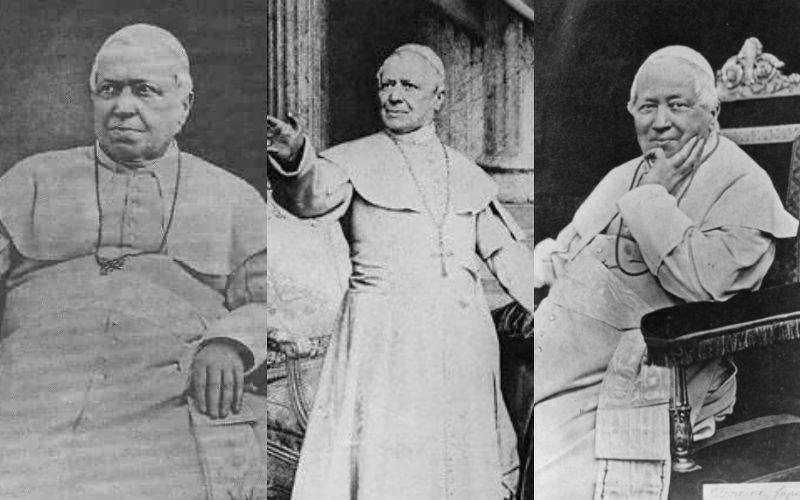Although various primitive photographic techniques have existed for centuries, modern photography got its start in early-19th century Europe. The first methods required exposure times of hours, or even days, but within a few decades inventors had got that time down to minutes and seconds.
Right in the middle of the 19th century was the long and stable reign of Pope Bl. Pius IX. Elected in 1846 and reigning until 1878, he had the longest papacy of any pope since St. Peter (who is believed to have reigned for around 35 years. He did some amazing things, including declaring the doctrine of the Immaculate Conception to be dogmatic and convening the First Vatican Council. And on top of all of that, he had a significant historical first: he was the first pope ever to be photographed.
And this wasn’t entirely without some controversy. The Church had been a patron of the world’s best painting for centuries – it was a known art form and long accepted by the Church. Should the Pope, and the Catholic Church in general, embrace this strange new medium? It wasn’t immediately obvious that it should.
At least one of Bl. Pius IX’s cardinals, Cardinal Giuseppe Pecci, thought painting was a “far superior and more benevolent presentation of a human being” than photography, and for most of his life refused to be photographed (though at least one photo was taken of him eventually). Bl. Pius IX, however, accepted the new medium and allowed himself to be photographed on many occasions.
It’s not clear exactly when these photos were taken of by whom. And remember that the photos were taken with early cameras, and so have resolution, explaining their strange appearance.
Behold, 6 of the earliest photos ever taken of a pontiff:






[See also: Historic: Leo XIII Blesses Camera in First Film Ever Taken of a Pope]
[See also: What Does Pope Francis Think of “Gender Theory”?]

